Alfred Andersch @ 100
The German novelist Alfred Andersch would be 100 today. The son of a conservative East Prussian army officer, he was born in Munich, Germany and died in Berzona, Ticino, Switzerland. His school master was Joseph Gebhard Himmler, the father of Heinrich Himmler. He wrote about this in The Father of a Murderer. In 1930, after an apprenticeship as a bookseller, Andersch became a youth leader in the Communist Party. As a consequence, he was held for 6 months in the Dachau concentration camp in 1933. He then left the party and entered a depressive phase of “total introversion”. It was during this period that he first became engaged in the arts, adopting the stance that became known as innere Emigration (“internal emigration”) – despite remaining in Germany, he was spiritually opposed to Hitler’s regime. In 1940, Andersch was conscripted into the Wehrmacht, but deserted at the Arno Line in Italy on 6 June 1944. He was taken to the United States as a prisoner of war and interned at Camp Ruston, Louisiana and other POW camps. After returning to Germany he began an active literary life, was part of Gruppe 47, the important post-war German writer association, edited magazines, was active in publishing, & worked for German radio — where he had an important role in introducing much controversial post-war writing to the public. In 1958 he moved to Switzerland. (I have little sympathy for W.G. Sebald’s “Between the Devil and the Deep Blue Sea” which accuses Andersch of having presented through literature a version of his life —and of the “internal emigration” more generally— that made it sound more acceptable to a post-Nazi public.) More bio-details can be found here in Wikipedia.
In this country Andersch never had much of an impact, though I’d recommend one of his books in translation, Flight to Afar, which amazon describes (not incorrectly) as follows:
A boy dreaming of Huckleberry Finn, a mortally ill Pastor, a seaman, a disillusioned Communist, a young Jewish girl running for her life – meet in a half-derelict Baltic fishing village and are drawn into a daring plan of escape from Nazi Germany. At the center of their plan is a small statue in the Pastor’s church, a statue which is to be confiscated because it is politically dangerous, a statue so beautiful and powerful it welds together the stangely assorted band of refugees.
The original title Sansibar oder der letzte Grund feels much more enticing — as it was to me as a teenage when I bought it in March 1965. I don’t remember too much of the book, except for its theme of a very diverse group of people trying to escape Nazi Germany & the (to me at that age) fascinating modernist narrative structure of the book (which today I may call a very readable modernist-lite).
For those who have german, here & here are two interesting newspaper articles remembering Andersch on his 100th.



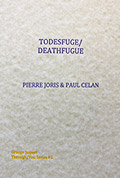 “Todesguge/Deathfugue”
“Todesguge/Deathfugue”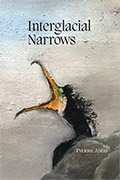 “Interglacial Narrows (Poems 1915-2021)”
“Interglacial Narrows (Poems 1915-2021)”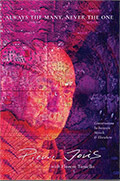 “Always the Many, Never the One: Conversations In-between, with Florent Toniello”
“Always the Many, Never the One: Conversations In-between, with Florent Toniello” “Conversations in the Pyrenees”
“Conversations in the Pyrenees”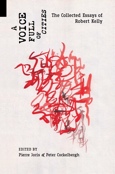 “A Voice Full of Cities: The Collected Essays of Robert Kelly.” Edited by Pierre Joris & Peter Cockelbergh
“A Voice Full of Cities: The Collected Essays of Robert Kelly.” Edited by Pierre Joris & Peter Cockelbergh “An American Suite” (Poems) —Inpatient Press
“An American Suite” (Poems) —Inpatient Press “Arabia (not so) Deserta” : Essays on Maghrebi & Mashreqi Writing & Culture
“Arabia (not so) Deserta” : Essays on Maghrebi & Mashreqi Writing & Culture “Barzakh” (Poems 2000-2012)
“Barzakh” (Poems 2000-2012) “Fox-trails, -tales & -trots”
“Fox-trails, -tales & -trots”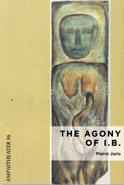 “The Agony of I.B.” — A play. Editions PHI & TNL 2016
“The Agony of I.B.” — A play. Editions PHI & TNL 2016 “The Book of U / Le livre des cormorans”
“The Book of U / Le livre des cormorans”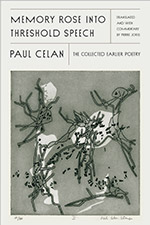 “Memory Rose Into Threshold Speech: The Collected Earlier Poetry of Paul Celan”
“Memory Rose Into Threshold Speech: The Collected Earlier Poetry of Paul Celan”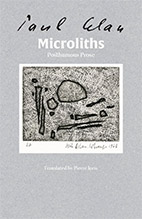 “Paul Celan, Microliths They Are, Little Stones”
“Paul Celan, Microliths They Are, Little Stones”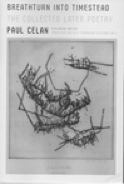 “Paul Celan: Breathturn into Timestead-The Collected Later Poetry.” Translated & with commentary by Pierre Joris. Farrar, Straus & Giroux
“Paul Celan: Breathturn into Timestead-The Collected Later Poetry.” Translated & with commentary by Pierre Joris. Farrar, Straus & Giroux